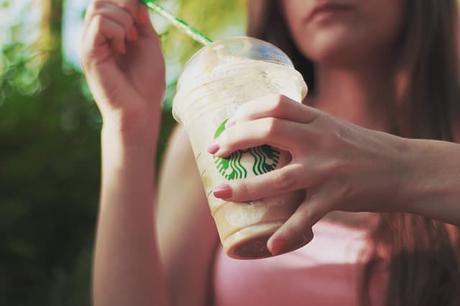Plastic straws are part of the 10 most collected garbage in the beach and on Monday, Starbucks declared its intentions to become the largest food and beverage retailer to ban the use of plastic straws – the company aims to achieve this feat globally by 2020, CNN Money reported.
However, Starbucks’ pronouncement will see the ban of 1 billion plastic straws annually. This decision comes after a ban was placed at the Seattle which will take effect from July 1.
“For our customers and partners, this is a significant milestone to achieve our global aspiration of sustainable coffee, served to our customers in more sustainable ways.” This was the statement of Starbucks CEO Kevin Johnson to Huffington Post.

Moving forward, the company has better alternatives by producing recyclable straw less lid for its coffee products. It will also offer better compostable plastic straws according to consumers’ preference.
It is necessary to know that about 8 million metric tons of plastic end up in the oceans, Nicholas Mallos of the Ocean Conservancy reported to CNN Money. According to a recent survey by Ocean Conservancy International Coastal Cleanup, it has been discovered that plastic straw was placed at NO.7 on the list of the 10 most collected garbage in the oceans.
Due to the growing concerns of the impact of plastics on marine life, another company, Hyatt, also declared on Monday that, starting Sept. 1, plastic straws will only be given if they are being requested, CNN Money also reported. Another company, Alaska Airlines, will stop issuing plastic straws and drinks starting from July, 16 and McDonald will do the same after announcing its plan to stop distributing straws in UK restaurants.
Pertaining the government participation in the fight against the use of plastic straws, the city of Malibu California, in the UK and EU, have also announced their plans to ban the use of plastics.
Moreover, single-use plastics have been on the rise and it has caused a major concern globally, due to its effect on every ecosystem in the world. It has been estimated that by 2050, there will be more plastic than fishes in the entire ocean. In addition to this, studies have discovered microplastic pieces in almost every type of seafood found in the market and restaurants.
Furthermore, environmental enthusiasts have heaped praises on the plans to curb the use of plastic straws globally.
The director of sustainability research & development and material science at World Wildlife Fund, U.S. Erin Simon said in a statement reported by CNN Money: “Plastic straws that end up in our oceans have a devastating effect on species, we hope others will follow in Starbucks’ footsteps.”
Starbucks will begin to produce and distribute strawless plastic lids to stores in Seattle and Vancouver. It is important to note that about 8000 stores in the U.S. and Canada have already had these strawless lids.
Emily Alexander, Starbucks Global Research & Development engineer, who designed the strawless lids initially, was amazed to learn of her design’s wider rollout.
“I am really excited to have developed something that can be part of this big transformation of going strawless,” she made this known during a press release issued by Starbucks. “It was this very small thing and now it is so much bigger and more impactful,” she also added.
A Starbucks spokeswoman said in an email to Huffington Post that consumers seem to like the new lids.
“We’ve had great feedback from customers and partners (employers) so far, and we’ll continue to take customer feedback and adjust as we move along,” she wrote.
However, the spokeswoman also added that new transition will not affect the price, saying the investment would have a “net-neutral impact for our business by 2020.”
On the other hand, most environmentalists are hoping this movement will curb the use of plastic straws globally. It is has been estimated that 175 million straws are used and then thrown away every day – which is an alarming rate.
Over the years, there have been misconceptions that the primary risk in the oceans was the ingestion of plastic bags or plastic products that harm marine life. At the moment, we now know the leading cause of harm to marine waters which is plastic.
It is important to also know that the breakdown of plastics releases Bisphenol-A (BPA), a toxic chemical that is carcinogenic and leads to hormone disorders.
Taking a step back, the movement on the use of plastic straws is really about the larger issue of plastic use globally. By gathering cities, celebrities, and companies all over the world, the goal is to raise further awareness of the harm in single-use plastics.
However, the health risks of microplastics are still not yet known. It is particularly hard to study as it’s nearly impossible to find a control group that has eaten fish without microplastic contaminants.

